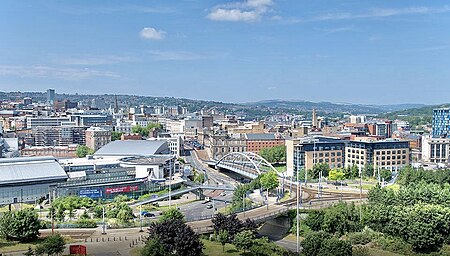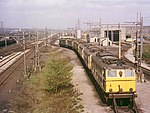South Yorkshire

South Yorkshire is a ceremonial county in the Yorkshire and the Humber region of England. It borders North Yorkshire and West Yorkshire to the north, the East Riding of Yorkshire to the north-east, Lincolnshire to the east, Nottinghamshire to the south-east, and Derbyshire to the south and west. The largest settlement is the city of Sheffield. The county is largely urban, with an area of 1,552 km2 (599 sq mi) and a population of 1,402,918. The largest settlements after Sheffield (556,500) are the city of Doncaster (113,566), Rotherham (109,697), and Barnsley (96,888). The east and west of the county are more rural. The county is governed by four metropolitan boroughs: Barnsley, City of Doncaster, Rotherham, and City of Sheffield. They collaborate through South Yorkshire Mayoral Combined Authority. South Yorkshire lies on the edge of the Pennines, and the west of the county contains part of the Peak District National Park. The River Don rises in these hills, and flows through Sheffield, Rotherham, and Doncaster before reaching the flat Humberhead Levels in the east of the county.
Excerpt from the Wikipedia article South Yorkshire (License: CC BY-SA 3.0, Authors, Images).South Yorkshire
Doncaster Road,
Geographical coordinates (GPS) Address Phone number Website Nearby Places Show on map
Geographical coordinates (GPS)
| Latitude | Longitude |
|---|---|
| N 53.5 ° | E -1.3333333333333 ° |
Address
Wath Victoria Primary School
Doncaster Road
S63 7AD
England, United Kingdom
Open on Google Maps








